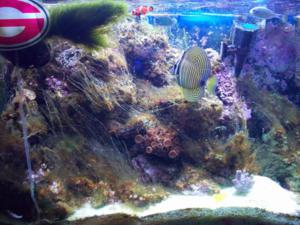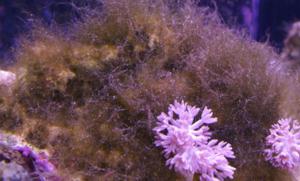Really been struggling with an out break of this type of algae shown in picture, and it somehow grew rapidly with nearly undetectable levels of nitrate and phosphate.
Since it started to grow a few weeks ago my torches have shriveled up and will most likely die. What type of algae is this and how do I combat it? Thanks

Since it started to grow a few weeks ago my torches have shriveled up and will most likely die. What type of algae is this and how do I combat it? Thanks

















